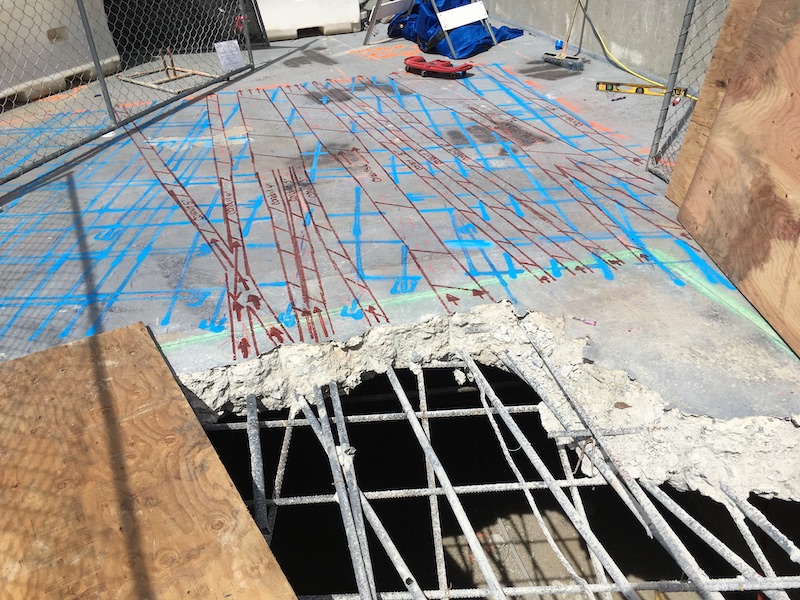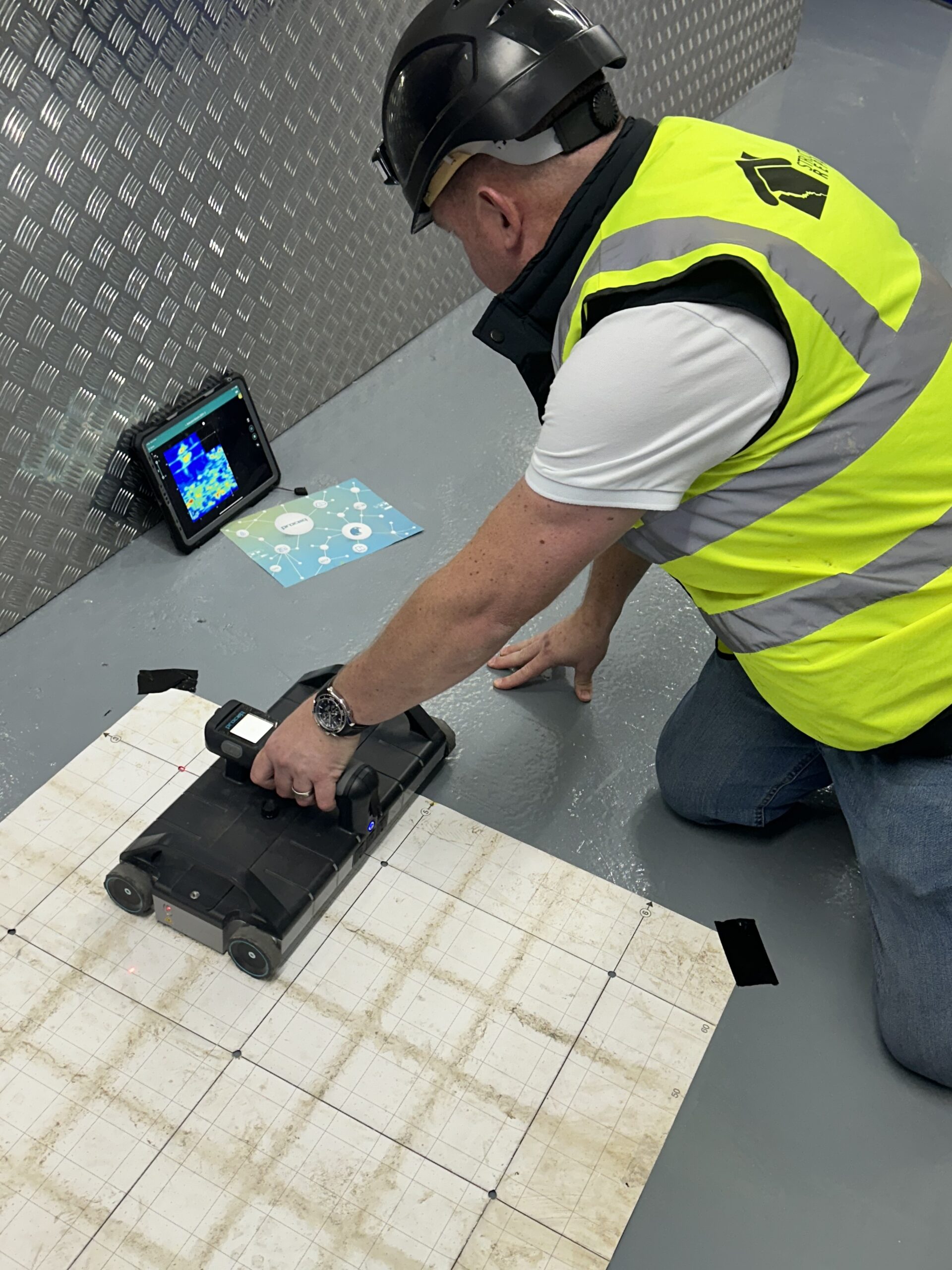The Importance of Professional Concrete Scanning Solutions
Elevate Your Building Refine With the Strategic Insights of Concrete Scanning for Improved Productivity
One such modern technology that has actually reinvented the building and construction market is concrete scanning. By harnessing the strategic insights provided by concrete scanning, building specialists can open a world of boosted productivity and streamlined processes.

Benefits of Concrete Scanning
Enhancing project performance and security, concrete scanning provides a non-destructive approach for identifying concealed items within concrete structures. By making use of technologies such as ground-penetrating radar (GPR) and concrete x-ray imaging, building groups can accurately locate rebar, post-tension cords, electric conduits, and various other blockages prior to exploration, cutting, or coring into concrete.
The advantages of concrete scanning are numerous. Building and construction sites can be intricate atmospheres, and understanding what lies under the surface area can avoid injuries and accidents.
Moreover, concrete scanning advertises overall job efficiency by enhancing operations and avoiding rework. By recognizing prospective concerns early, teams can readjust their strategies proactively, conserving time and resources over time. Essentially, the adoption of concrete scanning modern technologies is a strategic investment that pays returns in terms of safety, performance, and cost-effectiveness.
Technology Combination for Effectiveness
Concrete scanning's ability to improve process and boost project efficiency can be further optimized with critical assimilation of advanced innovations. By including Structure Information Modeling (BIM) software application into concrete scanning procedures, construction groups can attain a greater level of accuracy and control. BIM permits the production of 3D designs that supply thorough insights right into the project, making it possible for better decision-making and minimizing the probability of mistakes. In addition, the integration of Augmented Fact (AR) modern technology with concrete scanning can improve on-site visualization, allowing task supervisors and workers to overlay electronic info onto the physical environment in genuine time. This can assist in a lot more accurate positioning of elements and enhance communication amongst team participants. In addition, the use of drones for aerial surveys along with concrete scanning can quicken data collection and evaluation, allowing much faster decision-making and development monitoring. Overall, the strategic combination of these innovations can dramatically increase performance and productivity in construction tasks.
Preventing Pricey Errors
Just how can precise attention to information throughout concrete scanning processes aid building and construction groups in stopping expensive mistakes? Concrete scanning plays an important function in determining prospective problems prior to they rise into costly blunders. By making use of innovative scanning technologies such as Ground Permeating Radar (GPR) and electro-magnetic induction, construction groups can accurately spot rebar, energies, gaps, and various other obstructions within concrete structures. This level of accuracy makes it possible for task supervisors to make informed decisions pertaining to the layout and layout of their building and construction plans, lowering the threat of unintended damages to important facilities during the building process. Furthermore, concrete scanning aids in ensuring architectural honesty by determining weaknesses or issues in the concrete beforehand, permitting prompt repair work and alterations. By proactively dealing with these problems, construction groups can prevent pricey errors such as rework, hold-ups, or security threats that might arise from overlooked discrepancies in the concrete framework. Ultimately, spending in detailed concrete scanning treatments confirms to be an economical approach over time, saving both time and sources while enhancing overall task efficiency and high quality.
Enhancing Task Management
Careful attention to detail throughout concrete scanning refines not just aids in preventing expensive mistakes yet also lays a strong structure for reliable task monitoring in building ventures. By including concrete scanning technology into task management techniques, building and construction groups can enhance operations, boost interaction, and make certain that tasks remain on track.
Concrete scanning provides valuable insights right into the architectural integrity of existing elements, permitting task supervisors to make enlightened decisions pertaining to layout adjustments or building series. This proactive technique minimizes the risk of unanticipated delays or remodel, eventually saving time and resources. Additionally, the information gotten from concrete scanning can be incorporated into Building Information Modeling (BIM) platforms, enabling real-time cooperation and control amongst different stakeholders.
Furthermore, concrete scanning helps task supervisors identify prospective hazards or barriers prior to they escalate right into larger issues, advertising a much safer workplace for all entailed. With improved visibility and accuracy supplied by concrete scanning innovation, job managers can effectively intend, check, and carry out building and construction jobs with greater performance and self-confidence.
Taking Full Advantage Of Productivity
To boost productivity in construction jobs, executing reliable approaches and using advanced modern technologies is essential. Maximizing productivity includes simplifying processes, enhancing source allotment, and decreasing downtime. One essential facet of making the most of performance is with the adoption of concrete scanning modern technology. By utilizing ground-penetrating radar (GPR) and other scanning approaches, building groups can accurately find rebar, avenues, and other subsurface components, lessening the danger of expensive mistakes and delays during excavation and drilling.
Furthermore, embracing Building Information Modeling (BIM) software application can significantly enhance efficiency by producing detailed 3D designs that boost project visualization and control amongst different professions. check my site BIM permits much better clash discovery, allowing issues to be identified and dealt with prior to building even begins, conserving time and sources in the lengthy run.
Carrying out a lean building technique, which concentrates on getting rid of waste and enhancing effectiveness across all project stages, is another efficient method for taking full advantage of efficiency. By fostering partnership, interaction, and constant improvement, building and construction groups can function a lot more cohesively towards attaining job goals in a structured and efficient manner.
Conclusion
Finally, the calculated implementation of concrete scanning in the construction procedure provides various benefits, including enhanced effectiveness, cost savings, enhanced project administration, and improved efficiency. By integrating this modern technology, construction groups can prevent costly errors, simplify their operations, and optimize their total project output. Concrete scanning is a beneficial tool that can elevate the building procedure and lead to even more profitable and successful results.
